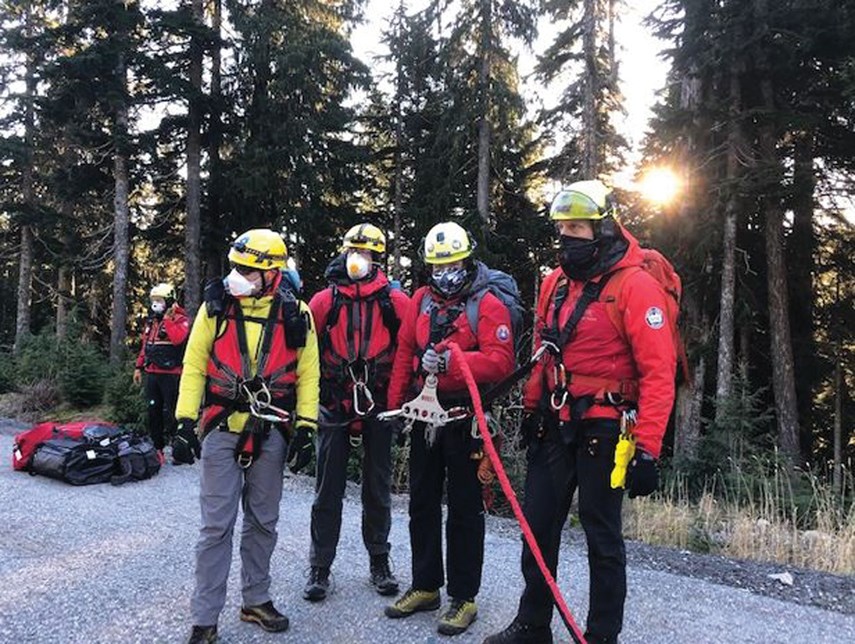It was three rescues on one tank of helicopter fuel for members of North Shore Rescue this weekend, the latest in an extremely busy year for the team.
“Saturday happened with a bit of a bang,” said NSR team leader Mike Danks.
The first call came in the afternoon after a woman slipped on the ice near St. Marks Summit on the Howe Sound Crest Trail. Her knee was cut open badly, Danks said, and she was unable to move on her own.
Thankfully, a group of hikers saw what happened and were able to call for help and keep the woman warm with their extra supplies.
Just as the Talon helicopter was taking off to bring a rescue team into the field, the same group of helpful bystanders called back to report another fall in the exact same spot. In that case, a man in his 60s fractured his arm.
In order to get both injured subjects out safely and quickly, search managers decided to divide and conquer, splitting the long-line helicopter team into two.
“We haven't really had a two-for-one caused by the exact same issue,” Danks said. “This is definitely a first.”
One at a time, the man and woman were brought back to waiting ambulances.
In both cases, the subjects were experienced and well equipped for their hike, Danks said.
“It's that ice that seems to really be getting people right now,” he said.
Danks added he wished every call into the backcountry could have such helpful assistance from Good Samaritans on the trail. It’s a reminder that the “10 essentials” everyone going into the mountains is asked to carry – a light source, signalling device, firestarter, warm clothes, pocket-knife, shelter, water and food, a first aid-kit, navigation and a cellphone – are just as likely to be put to use helping a stranger.
The team had only begun to debrief when they were called into action, this time for two hikers who had lost their way on nearby Mount Strachan.
The pilots had only five minutes of fuel left in in the helicopter before having to return to the airport and the sun was setting, but Danks said, that was enough to spot their subjects from above.
Danks said the younger hikers were closer to the trail than they thought – but they couldn’t see anything because they did not bring headlamps with them.
“That's what we're finding a lot these days. People are just treating it like it’s still summer - and not having adequate footwear, microspikes, bringing and ice axe or being familiar with the terrain they’re in,” he said.
After a two-month lull with virtually no calls at the start of the pandemic, the all-volunteer team is now on pace to smash previous records for callouts in a year. A big reason for that is novice hikers venturing into technically difficult areas without proper equipment or experience.
“All of a sudden the floodgates opened,” Danks said, adding he is appreciative of the well-seasoned adventurers who see people unprepared for the conditions and advise them to turn back.



